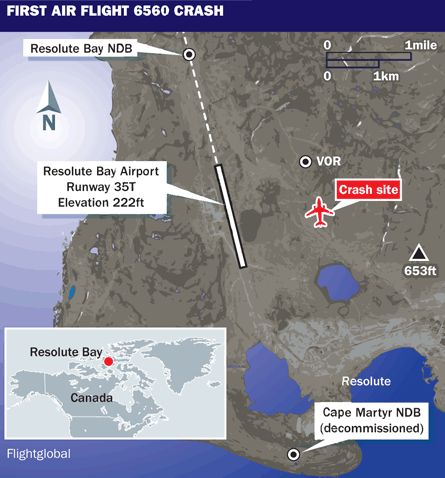Investigators said on 6 January the crash of a Boeing 737-210C operated by First Air has now been classified as a controlled flight into terrain accident but the cause is still unknown.
The 36-year-old 737 crashed 20 August on a hill about 1nm east of the midpoint of the runway at a military base in Resolute Bay, Canada, in foggy conditions, killing all four crew members and eight of 11 passengers.
The crashed aircraft had been involved in a military search and rescue exercise.
In its first major update on the investigation, Canada's Transportation Safety Board (TSB) also revealed that the onboard navigation system has emerged as a "key area" for the investigation.
The crew attempted a go-around 2sec before impact after deciding to conduct an instrument landing system (ILS) approach to Runway 35T, according to the TSB update.
 |
|---|
The ground-based ILS equipment seemed to be working properly, as another aircraft completed an approach successfully about 20min later, TSB said.
The 737's Pratt & Whitney JT-8D engines were operating and generating "significant power" at the moment of impact, TSB added.
An examination of the aircraft wreckage also revealed no apparent problems with the aircraft before it hit the ground.
Investigators are now conducting "exhaustive" tests on the 737's navigation systems, the TSB said. Also under review are the crew's training and procedures.
In December, the CEO of the arctic carrier First Air, Scott Bateman, resigned.
Source: Air Transport Intelligence news



















